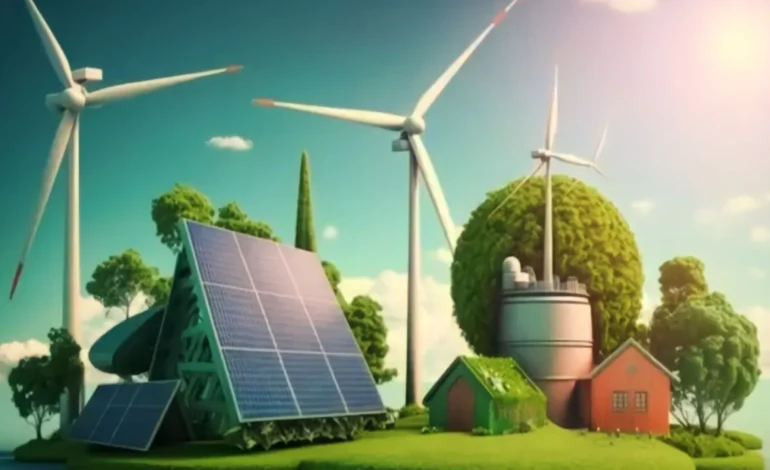
Virtual Field Trips: Exploring Nature and Environmental Concepts Online
Our lives have changed in many ways since the invention of digital technology, and education is no exception. The virtual field trip is one of the most interesting developments in educational technology. With the help of these virtual experiences, kids can learn about environmental topics and explore natural surroundings without ever having to leave their homes or classrooms. We will examine the advantages of virtual field trips, the technology that underpins them, and how they affect environmental education in this blog.
The Rise of Virtual Field Trips
The use of virtual field excursions, or VFTs, as an accessible, affordable, and adaptable substitute for traditional field trips has grown in popularity. Through the power of the internet and cutting-edge technology, these virtual field trips enable students to visit locations that they might never have the chance to see in person, such as remote rainforests and underwater ecosystems.
Virtual field trips are not a totally novel idea. Over the past few decades, it has seen tremendous evolution due to technological breakthroughs including high-speed internet, high-definition video, augmented reality (AR), virtual reality (VR), and interactive multimedia platforms. With the use of these resources, instructors can design immersive learning environments that closely resemble actual exploration.
The Benefits of Virtual Field Trips
-
Accessibility and Inclusivity:
- Geographical Access: Students from anywhere in the world can visit far-off and inaccessible sites through virtual field trips, which dissolve geographical barriers. This is especially advantageous for underprivileged or rural schools.
- Economical: When lodging, transportation, and admission costs are taken into account, traditional field excursions may be highly costly. These expenses are removed with virtual field trips, making them a more practical choice for schools on a tight budget.
- Inclusivity: Students with impairments can be accommodated in the design of virtual journeys, guaranteeing that every student has an equal chance to participate fully. Accessible features like as audio explanations, closed captioning, and flexible interfaces enable everyone to enjoy these activities.
-
Convenience and Flexibility:
- Schedule Virtual Field Visits Anytime: Without being limited by travel schedules, virtual field visits can be planned to fit into the academic program at any time. Teachers can schedule field trips that properly complement their class plans because to this flexibility.
- Repeated Visits: Virtual field visits, in contrast to conventional ones, enable students to review what they have learned and discover new facets of the subject matter.
-
Enhanced Learning Opportunities:
- Interactive Education: A lot of virtual field excursions include interactive components like games, quizzes, and practical exercises that keep students interested and improve their comprehension of the subject matter.
- Multimedia Resources: To create a deeper, more interesting learning experience, these tours frequently incorporate a range of multimedia resources, including pictures, films, 3D models, and simulations.
- Expert Access: Live or recorded sessions with experts, including scientists, environmentalists, and educators, can be included in virtual travels. These professionals can offer students in-depth insights and real-time responses to their queries.
Exploring Nature Through Virtual Field Trips
Virtual field trips centered around nature provide students with an unparalleled chance to investigate various ecosystems, gain knowledge about species, and comprehend the intricacies of environmental science. Here are a few noteworthy instances:
- Virtual Visits to National Parks: A lot of national parks all over the world provide students with virtual tours that let them explore the landscapes and discover the ecosystems therein. For example, the U.S. National Park Service offers interactive maps, educational videos, and panoramic vistas in its virtual tours of Yellowstone, the Grand Canyon, and other famous parks.
- Ocean Exploration: Companies such as the Ocean Exploration Trust provide students with virtual adventures that take them to the ocean’s depths to study shipwrecks, undersea geology, and marine life. Students can explore the wonders of the ocean below through interactive maps and live video feeds from remotely operated vehicles (ROVs).
- Rainforest Expeditions: Students can learn about the rich biodiversity of these ecosystems, the significance of rainforests in the global environment, and the threats they face from deforestation and climate change through virtual field trips to rainforests, such as those provided by the Rainforest Alliance.
- Zoos and Wildlife Sanctuaries: A lot of zoos and wildlife sanctuaries offer live animal cams and virtual tours so that students can see animals in their natural settings and get knowledge about conservation efforts. For instance, the San Diego Zoo provides educational movies and activities in addition to live cameras featuring a variety of animals.
- Centers for Environmental Science: Environmental science centers, like the Smithsonian Environmental Study Center, provide educational programs and virtual tours that instruct students on ecological study, sustainability, and conservation.
The Technology Behind Virtual Field Trips
The employment of cutting-edge technology that produces captivating and immersive experiences is essential to the success of virtual field trips. The following are some of the major technological advancements that enable virtual field trips:
- High-Definition Images and Videos: To create realistic virtual tours, high-quality photography and video are necessary. Students are able to see the surroundings they are investigating in great depth because of these visual components.
- Virtual Reality (VR): By enabling students to explore environments in a fully interactive 3D space, VR technology elevates immersion to a new level. Students can “walk” through forests, plunge into oceans, and fly over mountains using virtual reality goggles, experiencing these locations as if they were real.
- Augmented Reality (AR): By superimposing digital data on the actual world, AR helps pupils better comprehend their surroundings. AR apps, for instance, can provide details about the flora and fauna of a forest, transforming a straightforward stroll into an educational experience.
- 360-Degree Panoramas: 360-degree images and movies provide pupils with a thorough overview of a space, enabling them to gaze in all directions. VR headsets, iPads, and PCs can all be used to explore these panoramas.
- Interactive maps and simulations: Interactive maps and simulations provide pupils with the opportunity to investigate virtual spaces and carry out experiments. These resources offer interactive, instructive, and interesting learning opportunities.
- Live Streaming and Webcams: Students can see changes and behaviors in real time as they occur with the help of live streaming and webcams, which offer real-time views of natural surroundings and wildlife. To improve learning, this technology is frequently combined with professional commentary.
The Impact on Environmental Education
Virtual field visits give pupils a stronger awareness of natural settings and the issues they confront, which has a substantial impact on environmental education. The following are a few ways that virtual field trips support environmental education:
- Spreading Knowledge: Environmental concerns including pollution, deforestation, climate change, and conservation are brought to light through virtual field tours. Students get a stronger sense of urgency and obligation to safeguard the environment by seeing these problems firsthand.
- Encouraging Conservation: – A lot of virtual field trips center on conservation initiatives, instilling in pupils the value of safeguarding threatened species, maintaining natural ecosystems, and encouraging sustainable lifestyles. Students are motivated to become environmental advocates by these lessons.
- Improving Instruction in STEM: Science, technology, engineering, and math (STEM) components are frequently included in virtual field trips, giving students real-world experience with these areas. For instance, the science of climate change or the engineering of renewable energy systems may be taught to pupils.
- Promoting Citizenship Across Borders: Virtual field trips foster students’ sense of global citizenship by allowing them to explore a variety of ecosystems and cultures. Students gain knowledge of the interdependence of the world’s ecosystems and the effects of human activity on a worldwide level.
- Promoting Critical Thinking: – Online field excursions frequently incorporate talks and activities that promote critical thinking and problem-solving skills. Pupils are required to evaluate environmental problems, take into account various viewpoints, and provide remedies.
Best Practices for Educators
In order to get the most out of virtual field trips, educators ought to think about the following recommended practices:
- Align with Curriculum: Select virtual field trips that advance the lesson’s learning objectives and are in line with the curriculum. This guarantees that the experience is pertinent and serves to reinforce important ideas.
- Prepare the Students: – Before the virtual field trip, provide the students with some prior knowledge and context. Students who are prepared are better able to comprehend what they will see and why it matters.
- Involve Students: – Promote involvement by introducing interactive components like tests, conversations, and practical exercises. Students’ learning is improved and their interest is maintained by this involvement.
- Encourage Reflection: – Encourage discussion and reflection following the virtual field trip. Invite students to discuss their thoughts, views, and inquiries. This contemplation promotes deeper thinking and aids in the consolidation of their information.
- Utilize Technology Integration: Utilize the technology at your disposal to improve the experience. These could include live-streaming equipment, interactive maps, and VR headgear. Make certain that every student has access to the required technologies.
- Evaluate Learning: – Use tests, projects, or presentations to evaluate students’ learning. This assessment offers insightful criticism for upcoming experiences and aids in gauging the success of the virtual field trip.
Conclusion
Virtual field trips are a potent tool in today’s classrooms, providing students with an engaging and dynamic means of learning about nature and environmental themes. These virtual tours use cutting-edge technologies to eliminate barriers related to cost and distance, so enabling universal access to environmental education. They inspire the following generation of environmental stewards and global citizens, encourage conservation, and bring important environmental issues to the public’s attention. Virtual field trips have endless potential to improve education and encourage a closer relationship with the natural world as long as technology keeps developing.





